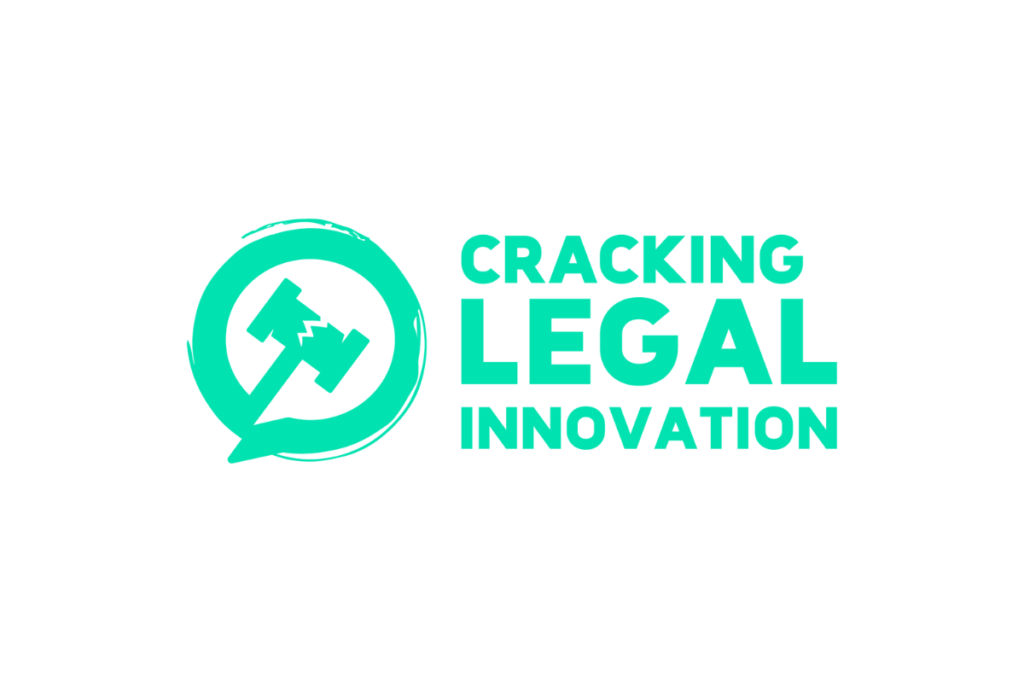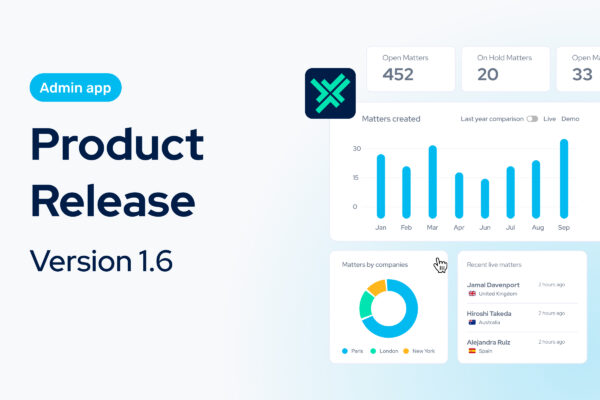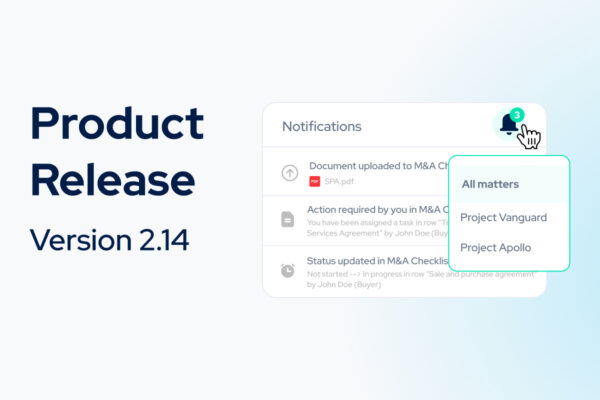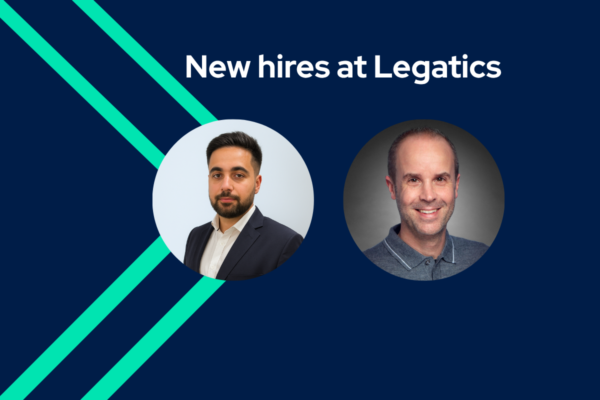In a recent episode of Cracking Legal Innovation, we dove deep into the cultural forces that make or break technology adoption in law firms. Our hosts Anthony Seale (CEO, Legatics) and Daniel Porus (CCO, Legatics) sat down with Isabel Parker, Chief Innovation Officer at White & Case and author of “Successful Digital Transformation in Law Firms.”
In this episode, Isabel unpacked why culture trumps technology every time, how to work with – not against – law firm DNA, and why the partnership model creates both the biggest barriers and greatest opportunities for innovation. From behavioral biases that innovation teams face daily to the strategic governance structures that actually work, this conversation revealed the insider secrets of driving lasting change in one of the world’s most traditional industries.
Below are key insights from their wide-ranging discussion about culture, change management, and the future of legal innovation.
Innovation teams pour countless hours into selecting the perfect technology stack. They build comprehensive rollout strategies. They create detailed training programs. Yet many still watch their carefully planned initiatives fall flat.
The missing piece? Culture.
“Innovation can’t take hold unless you have really sustained cultural change,” explains Isabel Parker, breaking down why culture drives everything – and how smart innovation teams work with law firm DNA instead of against it.
The partnership paradox: Strength and obstacle combined
Law firms present innovation teams with a fascinating paradox. The same cultural elements that create tremendous strength also generate the biggest barriers to change.
The strengths everyone misses
Parker pushes back against the common narrative that law firm culture blocks innovation entirely. “It’s easy to over-index on the more negative elements,” she notes. “The strengths of the culture sometimes are underplayed.”
Law firms excel at client centricity in ways that would impress any company. “Ultimately the client is king or queen, and client centricity is really, really important,” Parker observes. “If you’re not shaping your software development around the client, you’re not going to sell.”
The partnership model creates unique advantages too. “The partnership is a sort of beautiful construct, really, when it works well. It’s weirdly non hierarchical, it’s democratic, it’s consensus driven.”
The cultural barriers innovation teams know too well
But these same strengths create predictable challenges. Parker’s team recently shared common behavioral biases among lawyers, listing out various biases and how they manifest:
- High perfectionism: “I need the exact right answer before acting”
- Low resilience: “My stress levels are going through the roof”
- High autonomy: “I don’t need any help”
- High skepticism: “I don’t believe you’ll do what you say you’ll do”
The Type-A personalities that drive legal excellence also resist experimentation. “People that like to really, really achieve, really see things through, and are quite focused on a goal. And that can be a strength, but also it can mean there’s not much psychological safety for failure or experimentation.”
Strategy beats chaos: The governance revolution
Seale notices a shift in how firms approach innovation. “When we first started selling technology, it would be a random partner who would put their hand up and say, I want this in my practice,” he explains. “Over time, we’ve seen more and more innovation teams come in, and more of a centralized and joined up innovation strategy.”
Parker credits this evolution to strategic maturity. Firms that execute well have “a clear strategy. You’ve aligned around some really key strategic partners for the firm. You know that Legatics is what you want to go with because it’s the best on the market, and you’re doubling down.”
This strategic approach creates crucial protection. “That strategy is used as a sort of shield to help the innovation team move faster and be effective, and also as a shield to say, No, we’re not going to bring in X, Y and Z, because we have our strategic partners here.”
Handling the inevitable pushback
What happens when a powerful rainmaker demands a different solution? Parker takes a firm stance: “We are also professionals. You know, we’ve worked in this environment for a very long time. We do know what’s best for the firm.”
The key lies in having proper governance structures. At White & Case, escalations go to a partner and associate-led innovation committee that makes final decisions as business owners.
Meeting lawyers where they are: The design philosophy that works
Both Parker and Seale emphasize the same core principle: work with lawyer behavior, not against it.
Seale recalls an early product decision that proved transformative. “We said we’re trying to get lawyers to move from managing their transactions in big tables in Microsoft Word into an online interface. And one of the best things we can do to do that is to make the interface look exactly like the tables in Microsoft Word that they’re used to doing, and give them the ability to download it again in a table in Microsoft Word.”
This “meeting lawyers where they are” philosophy drives adoption success. Rather than forcing dramatic change, Seale advocates for working with existing lawyer behaviors. “We’re going to understand that there might be pretty good reasons why they’ve developed ways of doing things,” he explains. “We’re not going to say, no, just scrap everything you’re used to and come and adopt something new.”
Parker still references this approach in her current work. “Something that looks and feels like who we are as a firm, rather than maybe buying a different kind of enterprise platform that might give us a bunch of use cases that will be fantastic and really resonate, and then a bunch that won’t,” she explains. “Doing a little bit of what we can do with our data, our people, our expertise, our clients, and our way of delivering that really feels like us and is developed by us – I really feel that’s going to drive adoption.”
The AI inflection point: When lawyers become essential again
Generative AI creates a fascinating dynamic shift in law firms. For the first time, lawyers find themselves more critical to technology implementation, not less.
“Never before have lawyers been more important in this mix, actually, as subject matter experts to say, this is how we can spot opportunity for this in our own practices,” Parker explains. “You have to put this technology into the hands of the users, and then they’ll tell you what the use cases are.”
Yet this creates new dependencies. “They can’t do it on their own. We do need the right application builders. We need the right people that understand the infrastructure, they understand these models.”
The result? A rebalancing where “lawyers are more critical than they’ve ever been before, but will appreciate that they need the support of tech teams to do that as well.”
Beyond efficiency: Redefining value for the digital age
Innovation discussions often fixate on efficiency gains. Parker advocates for a broader value framework encompassing three dimensions:
1. Efficiency – The obvious starting point
2. Experience – Both client and lawyer experience improvements
3. Capability – Entirely new service offerings
This expanded view creates compelling client conversations. As one Capital Markets partner told Parker: “You’ve got the opportunity now to become a real trusted advisor to our business, better understand our business. Use that time, that productivity, gain time to better understand and serve us in a different way.”
The change management imperative
Despite culture’s critical importance, most law firms approach change management as an afterthought. “Law firms don’t really get change management. It’s not something that’s an established part of how law firms operate and I’ve often seen change management brought in as an add on capability and not be very successful”, Parker observes.
Her solution? “We have a huge change work stream. I’m calling on the support of some really experienced Change Managers that have done this before in a law firm environment.”
The investment pays dividends. Understanding behavioral biases enables targeted communication strategies. Instead of generic announcements that busy lawyers delete, Parker’s team looks for automated ways to slip training into existing calendar slots.
The path forward: Champions and cultural evolution
Parker and Seale agree on one crucial principle: start with enthusiasts, not skeptics.
“Start with the people who are really enthusiastic. Start with your champions,” Seale emphasizes. “That’s always worked compared to trying to force change on everyone.”
The generational shift reinforces this approach. “We’ve seen those trainees that use Legatics become the associates, and now they’re junior or even senior partners,” Porus notes. “You see the kind of shift that happens with that.”
Building tomorrow’s law firm today
Innovation success in law firms isn’t about fighting culture – it’s about understanding and harnessing it. The firms that thrive will be those that respect their cultural strengths while systematically addressing behavioral barriers.
As Parker says: “You have to look at what’s made this model really successful. Stop beating up on the law firms. There are so many strengths to the law firm model, which has been incredibly successful on many metrics for many, many years.”
The future belongs to innovation teams that work with law firm culture, not against it. They’ll meet lawyers where they are, leverage existing strengths, and create technology experiences that feel familiar while delivering transformational results.
Want to hear the full conversation? Listen to this episode of Cracking Legal Innovation on Apple or Spotify or subscribe now to catch every episode on legal innovation, technology adoption, and the future of law. Follow on Linkedin for all updates.









